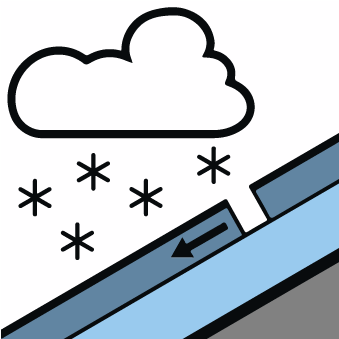
Danger level
 |
|  |  |

Obdobje hladnega vremena, plast napihanea snega.
Since the early morning the wind has been strong adjacent to ridgelines over a wide area. The sometimes strong wind will transport the old snow. In the course of the day the previously small wind slabs will increase in size once again. As a consequence of a gathering storm force wind from northwesterly directions, large surface-area wind slabs will form since Monday especially adjacent to ridgelines as well as above the tree line. The avalanche prone locations are to be found in particular on wind-loaded slopes of all aspects above approximately 2200 m and at transitions from a shallow to a deep snowpack. The fresh wind slabs are to be found especially adjacent to ridgelines and in gullies and bowls and at elevated altitudes. Over a wide area easily released wind slabs will form. The sometimes large wind slabs can be released easily, even by a single winter sport participant, especially on east to south to west facing aspects above the tree line. This applies in particular at their margins.
Snowpack
dp.4: cold following warm / warm following cold
Over a wide area 50 cm of snow, and up to 70 cm in some localities, will fall until the early morning above approximately 1800 m. The new snow can be released easily or naturally in all aspects above the tree line. Snow profiles and stability tests have confirmed the distinct danger. The covering of new snow is soft. Distinct weak layers in the upper part of the snowpack are difficult to recognise. The new snow will be deposited on surface hoar in areas close to the tree line. Above the tree line: Towards its base, the snowpack is faceted and weak. Over a wide area new snow is lying on a weakly bonded old snowpack. Avalanches can be released in deeper layers very easily.
